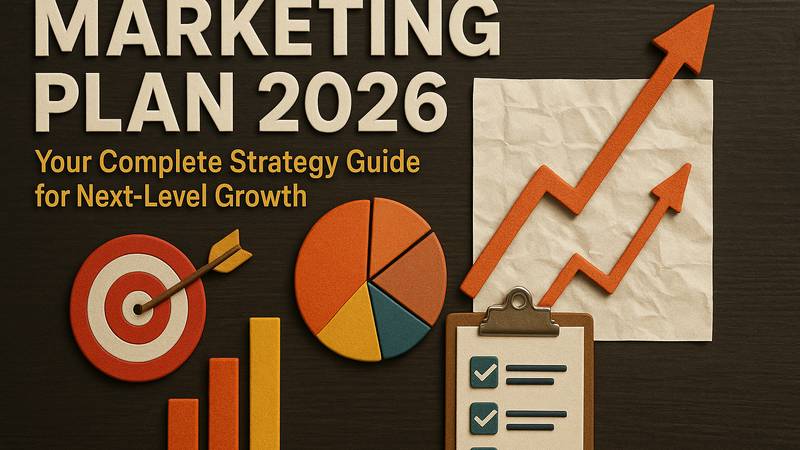
How to create engaging content that resonates
In today’s digital age, creating engaging content is essential for any business or individual looking to make an impact online. With so much content available to users, it’s crucial to stand out and create content that captures their attention and keeps them coming back for more. In this article, we’ll explore ten tips for creating compelling content that your audience will love.
Identify Your Audience
One of the most important steps in creating content is understanding your audience. Without this crucial information, it’s impossible to create content that resonates with your readers. Identifying your audience is the first step in creating content that speaks directly to their interests and needs.
There are several ways to identify your audience. One of the most effective methods is to conduct market research. This involves gathering data about your target audience’s demographics, interests, and pain points. You can use this information to create buyer personas, which are fictional representations of your ideal customers.
For example, if you’re creating content for a health and wellness website, your target audience might be young adults between the ages of 18 and 35 who are interested in fitness, healthy eating, and mental health. By understanding their interests and needs, you can create content that speaks directly to them.
Another way to identify your audience is to analyze your website analytics. This can give you valuable information about your readers, such as their age, gender, location, and interests. You can use this data to create content that is tailored to their preferences.
Once you’ve identified your audience, it’s important to create content that is relevant and engaging to them. This might involve using a tone and style that resonates with them, or covering topics that are of particular interest to them. For example, if your audience is interested in fitness, you might create content about the latest workout trends or tips for staying motivated.
Ultimately, identifying your audience is the first step in creating content that is both effective and engaging. By understanding your readers’ interests and needs, you can create content that speaks directly to them, building a loyal following and driving traffic to your website.
Focus on Quality Over Quantity
Creating great content takes time and effort, which is why it’s essential to prioritize quality over quantity. Rather than churning out as much content as possible, focus on creating fewer pieces of high-quality content that provide value to your audience. This will establish your credibility and authority in your niche, leading to better engagement and higher conversion rates.
When it comes to content creation, it’s easy to get caught up in the idea that more is better. However, this couldn’t be further from the truth. In fact, producing large quantities of low-quality content can actually harm your brand’s reputation and turn potential customers away.
Instead, focus on creating content that is informative, engaging, and relevant to your target audience. This could mean conducting in-depth research, interviewing industry experts, or simply taking the time to craft a well-written and thought-provoking article. Whatever approach you take, the key is to provide value to your readers and establish yourself as a trusted source of information in your niche.
Stand out from the Competition
Another benefit of focusing on quality over quantity is that it allows you to stand out from the competition. In today’s crowded digital landscape, there are countless brands vying for attention and trying to capture their audience’s interest. By creating content that is truly exceptional, you can differentiate yourself from the rest of the pack and build a loyal following of engaged readers.
Of course, creating high-quality content does require a significant investment of time and resources. However, the payoff can be well worth it in terms of increased traffic, leads, and sales. By taking a strategic approach to content creation and focusing on quality over quantity, you can position your brand for long-term success and establish yourself as a thought leader in your industry.
Use Visuals to Enhance Your Content
Visuals, such as images, videos, and infographics, are a great way to enhance your content and make it more engaging. Research has shown that content with visuals receives 94% more views than text-only content. This is because visuals are processed by the brain 60,000 times faster than text, making it easier for your audience to understand and remember your message.
When it comes to images, it’s important to choose high-quality, relevant visuals that support your message. Avoid using stock photos that look generic or staged, as they can come across as inauthentic and undermine your credibility. Instead, consider using original photos or illustrations that are unique to your brand and help tell your story.
Another effective way to use visuals is through videos. Videos can be used to showcase products or services, provide tutorials, or share behind-the-scenes glimpses of your business. They are also a great way to build a connection with your audience and humanize your brand.
Infographics are another powerful visual tool that can help simplify complex information and data. They are especially useful for presenting statistics, survey results, or research findings. Infographics can be shared across social media platforms, making them a great way to increase your reach and engagement.
Overall, incorporating visuals in your content strategy can help increase engagement, improve understanding, and make your brand more memorable.
Incorporate Storytelling into Your Content
People love stories, and incorporating storytelling into your content is an excellent way to capture your audience’s attention. Whether you’re writing a blog post, creating a video, or sharing on social media, storytelling can help you connect with your audience on a deeper level. Use anecdotes, personal experiences, and case studies to illustrate the points you’re trying to make and make your content more relatable.
Think about a time when you were captivated by a story. Maybe it was a book you couldn’t put down, a movie that made you cry, or a podcast that kept you on the edge of your seat. What made that story so compelling? Chances are, it was the characters, the plot, and the emotional connection you felt with the story.
Now, think about how you can apply those same storytelling techniques to your content. Maybe you’re writing a blog post about the benefits of a new product. Instead of just listing the features, tell a story about how the product helped one of your customers solve a problem. Use their personal experience to illustrate the benefits and create a connection with your readers.
Another way to incorporate storytelling into your content is to use case studies. If you have a successful project or client, share their story with your audience. Talk about the challenges they faced, the solutions you provided, and the results they achieved. This not only showcases your expertise but also provides social proof that your services or products are effective.
In conclusion, incorporating storytelling into your content is a powerful way to engage your audience and make your content more memorable. Use anecdotes, personal experiences, and case studies to illustrate your points and create a deeper connection with your readers. By doing so, you’ll not only capture their attention but also build trust and loyalty over time.
Make Your Content Actionable
To truly engage your audience, make your content actionable. Provide tips, strategies, or actionable steps that your audience can implement in their lives. This will give your content more value and make it more memorable. Additionally, it will show your expertise and position you as a thought leader in your industry.
When it comes to creating content, it’s important to understand that simply providing information is not enough. Your audience wants to know how they can apply that information to their own lives and see results. By making your content actionable, you are giving them the tools they need to make positive changes and achieve their goals.
One effective strategy for making your content actionable is to break it down into steps. For example, if you are writing a blog post about how to start a successful business, you could provide a step-by-step guide that walks your audience through the process. This not only makes your content more actionable, but it also makes it easier to follow and more likely to be shared.
Another way to make your content actionable is to provide real-life examples. People are more likely to take action when they can see how others have successfully implemented the strategies you are recommending. By sharing case studies or success stories, you can inspire your audience and give them the confidence they need to take action.
Finally, don’t be afraid to get specific. The more detailed and specific your advice is, the more actionable it will be. For example, instead of simply recommending that your audience exercise more, provide specific exercises they can do and how often they should do them. This level of detail will make it easier for your audience to take action and see results.
In conclusion, making your content actionable is key to engaging your audience and establishing yourself as a thought leader in your industry. By providing tips, strategies, and actionable steps, you can give your audience the tools they need to make positive changes and achieve their goals. So, next time you create content, remember to make it actionable!
Leverage User-Generated Content
User-generated content is a powerful tool for creating engaging content. Rather than creating all the content yourself, leverage your audience’s creativity and encourage them to share their experiences and stories with your brand. This will not only create a more diverse range of content but also foster a sense of community among your audience.
Promote Your Content Strategically
Creating great content is only half the battle – promoting it effectively is equally important. Develop a promotion strategy that targets your audience, using social media, email marketing, and other channels to get your content in front of the right people. Utilize hashtags, paid advertising, and influencer partnerships to increase your reach and engagement.
Analyze Your Content Performance
To continuously improve your content, it’s essential to analyze its performance regularly. Use analytics tools to track engagement, traffic, and conversion rates for your content. This information will help you identify what content resonates with your audience and what you need to improve.
Keep it Fresh
Finally, it’s important to keep your content fresh and up-to-date. Regularly revisit and update your content to keep it relevant and accurate. Additionally, explore new formats and topics to keep your audience engaged and interested in your brand.
By following these ten tips, you can create engaging content that resonates with your audience and helps you achieve your business goals.
If you want to learn more about marketing, check out the rest of our blog. If you’re ready to start making content, sign up for a free trial to get the tools you need to make great marketing campaigns!
© 2023, Vertical Response. All rights reserved.



